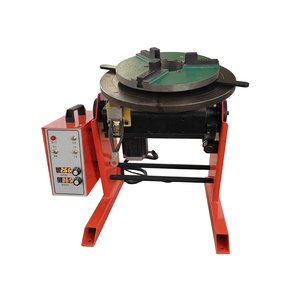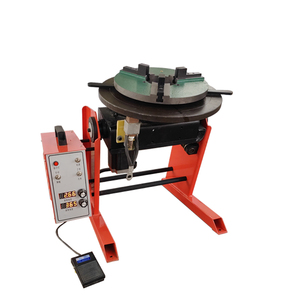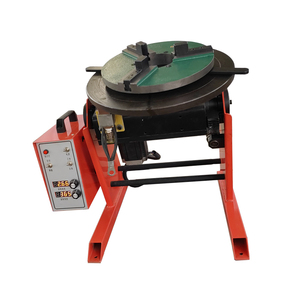
All categories
Featured selections
Trade Assurance
Buyer Central
Help Center
Get the app
Become a supplier

(1117 products available)

































A sun alignment machine is an essential tool in the automotive industry, especially in the tire and suspension service sector. This machine is used to measure and adjust the alignment of a vehicle's wheels to ensure optimal performance, safety, and tire longevity. Here are some common types of sun alignment machines:
2D Wheel Alignment Machine:
The 2D wheel alignment machine is a traditional alignment machine that uses two-dimensional technology to measure the alignment angles of a vehicle's wheels. This type of alignment machine uses physical rulers, levels, and gauges to measure alignment angles. Technicians can set the vehicle on the alignment lift and attach the clamps to the wheels. The rulers and levels are used to measure the angles of camber, caster, and toe simultaneously. This information allows the technicians to see how the wheels are aligned and make the necessary adjustments. 2D alignment machines are less expensive than 3D machines, but they are also less accurate and more time-consuming to use.
3D Wheel Alignment Machine:
3D wheel alignment machines are more advanced and accurate than 2D machines. These machines use three-dimensional technology to measure and analyze the alignment of a vehicle's wheels. They have laser sensors and computerized systems that provide real-time data and graphics. The vehicle is set on the alignment rack, and reflective targets are attached to the wheels. The machine's laser sensors scan the targets and measure the alignment angles in real time. The computer analyzes the data and displays it on the screen, allowing the technicians to see the alignment in three dimensions. The 3D alignment machine provides precise measurements, is quick and easy to use, and can diagnose complex alignment problems. This makes it a valuable tool for modern alignment workshops.
Portable Wheel Alignment Machine:
Portable wheel alignment machines are compact and lightweight devices that can be easily transported and set up in various locations. These machines offer basic wheel alignment functions, such as measuring toe angles, and can provide accurate and reliable results. The portable alignment machine uses laser or optical technology to measure the wheel angles. It usually consists of alignment gauges, sensors, displays, and a carrying case. Technicians can place the portable machine on the shop floor or even at the roadside and perform wheel alignment checks and adjustments. The portable wheel alignment machine is handy for mobile alignment services, roadside assistance, and small workshops with limited space.
Sun alignment machines have various specifications that differ based on the model and manufacturer. Here are some general specifications for the sun alignment machine:
Measurement Accuracy
Sun alignment machines are used to measure the alignment of vehicles accurately. Therefore, they have high accuracy levels that allow for precise measurement. For instance, some machines have an accuracy level of +/- 0.5 mm.
Measurement Range
The measurement range refers to the angles and parameters that the machine can measure. The measurement range of a sun alignment machine is usually +/- 5 degrees for camber and caster and +/- 0.5 inches for thrust angle.
Data Processing
Some machines come with data processing systems that allow users to analyze and process alignment information. The systems may have features such as on-screen displays, printouts, and computers that assist in data processing.
Measurement Equipment
Sun alignment machines have different measurement equipment, such as cameras, lasers, and sensors. The equipment is used to offer more accurate and precise measurements. For instance, lasers are used for precise alignment, while sensors measure vehicle parameters.
Vehicle Adaptability
Sun alignment machines are designed to be suitable for measuring different vehicles. The machines have features that allow for the adjustment of the alignment setup depending on the vehicle size and type.
Machine Construction
Sun alignment machines have strong and durable structures. The machines are usually constructed with high-quality materials that enhance their durability. Moreover, the machines have portable designs, allowing for easy movement and installation.
Power Supply
The sun alignment machines require different power supply levels depending on the model and manufacturer. For instance, some machines require an AC power supply of 220 volts, while others require a 110 volts power supply. Therefore, users should ensure they have the required power supply before using the machine.
Like other machines, sun alignment machines require regular maintenance to enhance their performance. Here are some tips for maintaining sun alignment machines:
When choosing a sun alignment machine, consider the following factors:
Purpose and application
Selecting the right Sun alignment machine is based on the purpose and application. Consider the intended use and the alignment requirements. For example, if the alignment requires high precision, a machine that provides high precision should be selected.
Measurement range
The measurement range of the sun alignment machine should be considered. The measurement range should be compatible with the alignment requirements. For example, if the application requires a large measurement range, a machine with a large measurement range should be selected.
Precision and accuracy
Precision and accuracy should be considered when choosing a sun alignment machine. Different machines have different precision levels. A machine that provides high precision and accuracy consistently should be selected.
Ease of use
when choosing a sun alignment machine, the ease of use should be considered. Some machines are more user-friendly than others. A machine that is easy to set up, operate and maintain should be selected.
Portability
Portability is an important factor when choosing a sun alignment machine. For some applications, a portable machine is required. A lightweight and compact machine should be selected for portable machines.
Durability
Durability should be considered when choosing a sun alignment machine. The machine should be durable and withstand harsh conditions. The sun alignment machine's materials and construction should be considered.
Cost
When choosing a sun alignment machine, cost is an important factor. Sun alignment machines with different prices are available. A machine that is within the budget and provides good value for money should be selected.
It is not easy to replace a sun alignment machine. However, there are some steps that can be followed to make the process easier.
Check the budget
Before anything else, see if the budget is in place. Replacing a sun alignment machine can be expensive. Have a financial plan so that when the time comes, the budget will be in place.
Research
Do thorough research on which machine to go for. Check out reviews, do comparisons, and see which machine will fit the business needs.
Technician training
If the new machine is different from the old one, it might be a good idea to train the technicians. Many alignment machine companies offer training for their products. This will ensure that the technicians are familiar with the machine and will reduce errors.
Setup
When installing the new alignment machine, ensure that it is set up correctly and according to the manufacturer's instructions. A properly set-up machine will work perfectly.
Calibration
After installation, the machine needs to be calibrated. Follow the manufacturer's calibration instructions. This will ensure that the machine is working as it should.
Maintenance
Have a maintenance schedule for the new sun alignment machine. Proper maintenance will increase the lifespan of the machine and prevent it from breaking down.
Q1. How often should vehicles be aligned?
A1. There is no definite answer to this because the alignment depends on different factors. Ideally, it is recommended to check the alignment after every 6,000 miles. The vehicle's manual also has the manufacturer's recommendations for alignment checks.
Q2. What are the signs of a misaligned vehicle?
A2. The common signs include the steering wheel not being centered when driving, the vehicle pulling to one side, uneven tire wear, and visible uneven gaps between body panels. If a driver notices such signs, it is best to check the vehicle's alignment using the sun alignment machine.
Q3. Can a sun alignment machine work on any vehicle?
A3. Yes, the sun alignment machine can work on any vehicle. The technicians will just input the specifications of the vehicle being aligned into the system. The sun alignment machine will then adjust and provide the measurements based on that specific vehicle.